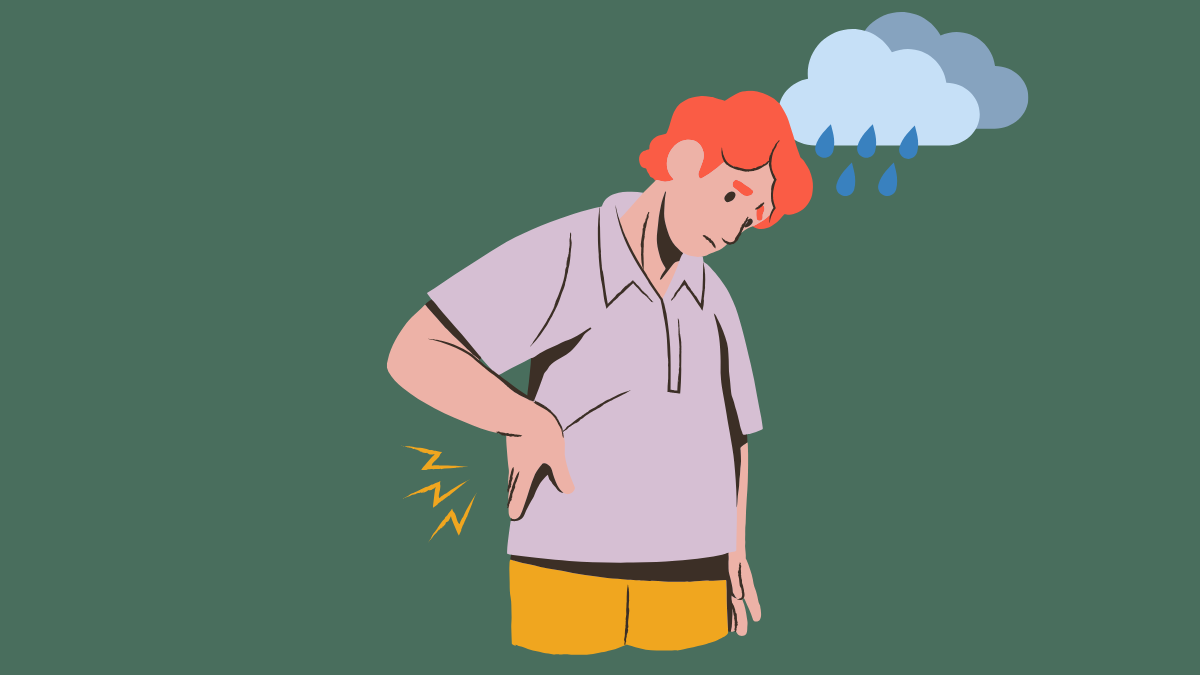Chronic pain is pain that exists past the expected time of healing which is usually estimated to be three months. Yet, contrary to popular belief, chronic pain is much more than just a physical sensation. Chronic pain impacts our mental health, too. It affects our emotions, our mood, our cognition, our sleep and our social life. Not surprisingly, this can sometimes lead to mental health disorders such as anxiety or depression.
According to Pain Australia, 37% of Australians living with chronic pain experienced depression and 25% reported some form of anxiety.
The connection between pain and the brain
The brain is always receiving messages from our body. It is getting messages right now that you have clothes on, the position your legs and arms are in, but it will ignore most of them. The brain processes all these messages and decides which messages can be ignored and which messages it needs to pay attention to in order to keep us safe and protected.
When there is an acute injury or disruption in our body, messages from our body are sent to tell the brain. Because we need to heal and protect an injured body part, the brain will process these messages and then send out a signal of pain. This is the pain signalling system. It’s not until the brain does this that we feel pain, so ALL pain comes from the brain.
Normally, as the body heals and we don’t need to protect that area of the body anymore, the pain signalling system adapts and dies down.
People with chronic pain experience pain well after the expected time of tissue healing. The pain signalling system becomes hypersensitive, does not adapt and continues to process a signal of pain. The pain is real, it just isn’t a signal of damage anymore. It’s now a signal processed by an oversensitive pain signalling system. It is like the faulty car alarm that goes off in the middle of the night despite there being no burglar or threat to the car. Chronic pain is not a signal of harm.
The good news is that the brain and pain signalling system can be retrained so that it becomes less responsive or sensitive.
How can Cognitive Behavioural Therapy (CBT) help manage my pain?
There are lots of things that feed into this system and your emotions, thoughts and stress can all activate the pain signalling system. Cognitive Behavioural Therapy (CBT) helps to identify the thoughts, feelings and behaviours that reinforce the faulty pain signalling system. Cognitive behavioural therapy helps patients to modify their emotional and behavioural response to pain by challenging cognitive processes, eg. thoughts, fears and catastrophising about the pain. Once we identify unhelpful thinking and behaviour patterns, we can start to swap them for more helpful ones. Research has shown that this helps to reduce the pain signals and helps to get you back to living your life.
Often when we feel pain for a long time, we reduce our activity. This results in our body becoming deconditioned and our pain signalling system getting used to less and less movement. When we try to do more than our body is used to, our pain signalling system may react with increased pain. Some people will change or even stop doing things to avoid this signal of pain, fearing it may be a signal of harm. By gently and slowly increasing your activity we can retrain the pain signalling system to be less responsive to movement and get you back to doing things that are important to you.
What ‘homework’ is involved when using CBT as part of a pain management plan?
Chronic pain is complex. It impacts so many aspects of our life- our mood, our activity, our work and relationships; and because of this you need many different strategies to address these. A pain management program (such as the one THIS WAY UP offers) helps to teach you the many tools and strategies that can help to manage your pain by tackling each of the many areas of your life that have been impacted. This includes things like pacing, movement, goal setting, sleep, stress and relationship management. By using the tools and strategies that are relevant to you, you can learn to manage your pain and get back to life despite your pain.
No pain, no gain?
The tools and strategies found in a pain management program require you to learn new skills which does take some time and practice. But evidence shows that if you do the program, practice and apply the skills then you will be able to better manage your pain and get back to living your life. A pain management program is often a new and different approach to what you have been advised to do or tried in the past.
If you come with an open mind, ready to explore the different approaches and practice the tools and strategies, you will be well on your way to managing your pain.


